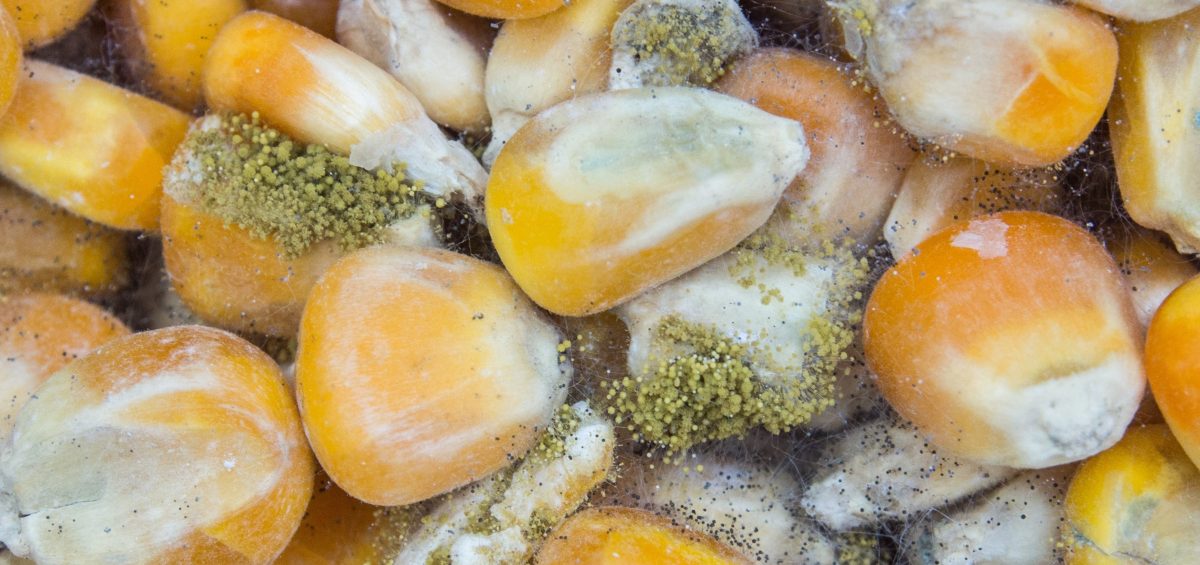Have you ever cut the mouldy layer off the cheese out of the fridge?
Seen the furry and fluffy appearance of mould on those week-old baked beans you left in there?
These are moulds and fungi, of which different types depending on the substrate can produce hundreds of different types of Mycotoxins.
There are about 12 main ones that are extremely toxic and readily prevalent in the foods we consume.
These toxins are produced when the mould/fungi grow. While not a big problem at home in your domestic fridge; you should never just cut off or remove surface mould from your food and we will tell you why in this blog. The food industry, which includes long logistics chains within it, can lead to changeable storage conditions allowing Mycotoxins to be a potentially big problem.
In the commercial food industry Risk assessments of mycotoxins have been done by the Joint FAO/WHO Expert Committee on Food Additives (JECFA) and are used by governments and by the Codex Alimentarius Commission (the intergovernmental standards-setting body for food) to establish maximum levels in food or provide other risk management advice to control or prevent contamination.
What Exactly Are Mycotoxins?
As mentioned, they are the toxin produced by metabolising moulds and fungi. Mycotoxins include aflatoxins, ochratoxin A, patulin, fumonisins, zearalenone and nivalenol/deoxynivalenol. Common foodstuffs that can be problematic are cereals, dried fruits, nuts and spices. These moulds can occur either before or after harvest, during storage, on or in the food itself usually under warm, damp and humid conditions. Aflatoxin M1 can contaminate milk and is tested for on a regular basis. Most mycotoxins are chemically stable and will survive heat treatment and food processing.
What Health Effects Can The Toxins Have?
Mycotoxins are a risk to both humans and livestock as we consume the same types of foods in many instances. Moulds and fungi can grow on a variety of different crops and foodstuffs and can penetrate deep into food, they do not just grow on the surface of the food.
Large doses of aflatoxins can lead to acute poisoning (aflatoxicosis) and can be life threatening, usually through damage to the liver. Aflatoxins have also been shown to be genotoxic, meaning they can damage DNA and cause cancer in animal species. There is also evidence that they can cause liver cancer in humans. The maximum levels for mycotoxins in food are very low due to their severe toxicity. For example, the maximum levels for aflatoxins set by the Codex in various nuts, grains, dried figs and milk are in the range of 0.5 to 15 µg/kg (a µg is one billionth of a kilogram). The Codex maximum limit for patulin in apple juice is 50 µg/L.
Ochratoxin A is formed during the storage of crops and is known to cause a number of toxic effects in animal species. The most sensitive and notable effect is kidney damage, but the toxin may also have effects on foetal development and on the immune system.
Major human dietary sources of patulin are apples and apple juice made from affected fruit. The acute symptoms in animals include liver, spleen and kidney damage and toxicity to the immune system. For humans, nausea, gastrointestinal disturbances and vomiting have been reported.
Fumonisins have been related to oesophageal cancer in humans, and to liver and kidney toxicity in animals.
Fusarium fungi are common to the soil and produce a range of different toxins.
Trichothecenes can be acutely toxic to humans, causing rapid irritation to the skin or intestinal mucosa and lead to diarrhoea. Reported chronic effects in animals include suppression of the immune system.
Zearalenone (ZEN) has been shown to have hormonal, estrogenic effects and can cause infertility at high intake levels, particularly in pigs.
How do we protect against the risk from Mycotoxins?
- Do not process or consume raw material that is physically affected by mould, looks shrivelled or is discoloured
- Purchase fresh raw materials and do not keep them or their finished products for too long
- Store foods correctly as efficient drying of commodities and maintenance of the dry state, or proper storage is an effective measure against mould growth and the production of mycotoxins.
- Keep foods free from insect infestation
Conclusion
Always, as part of your HACCP plan risk assess your microbiological hazards within your process and sourcing spheres.
Know your supply chain well so that your raw materials are grown and produced well, are as fresh as possible and maintained in good storage conditions.
Have testing regimes for both raw materials and finished goods so that you are acutely aware of the levels of any problematic toxins that could be a risk to your product.
Regularly audit your 3rd party suppliers and brokers so that you are aware of the providence, storage conditions and true age of your materials.


